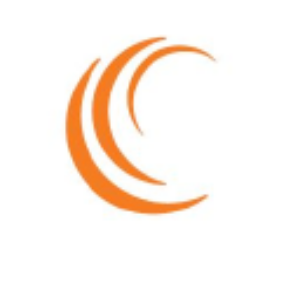Soligenix Corporate Update Letter - Key Highlights and Upcoming Milestones
Rhea-AI Summary
Soligenix (Nasdaq: SNGX) provided a corporate update highlighting key developments and upcoming milestones. The company's late-stage rare disease pipeline includes HyBryte™ for cutaneous T-cell lymphoma (CTCL), with top-line results from the 80-patient Phase 3 FLASH2 trial expected in H2 2026. The trial has shown promising results with 75% treatment success after 18 weeks of continuous treatment.
Additional pipeline developments include SGX302 for psoriasis with Phase 2a results expected in Q4 2025, and SGX945 for Behçet's Disease with Phase 2a results anticipated in Q3 2025. The company projects potential peak annual U.S. sales of $90 million for HyBryte™, with a total addressable global market of over $2B across all programs. Soligenix reports approximately $7 million in cash, providing runway into Q1 2026.
Positive
- HyBryte™ demonstrated 75% treatment success rate after 18 weeks in CTCL patients
- Total addressable market potential exceeds $2B annually across all programs
- HyBryte™ showed superior efficacy vs. Valchlor® (60% vs. 20% response rate)
- Manufacturing successfully transferred to U.S. facility with larger batch capacity
- Cash runway extends into Q1 2026
Negative
- Phase 3 FLASH2 trial results not expected until second half of 2026
- Currently seeking strategic partnerships for ex-U.S. markets
- Limited cash position of $7 million requires careful management
News Market Reaction 1 Alert
On the day this news was published, SNGX gained 8.93%, reflecting a notable positive market reaction.
Data tracked by StockTitan Argus on the day of publication.
Dear Friends and Shareholders,
I would like to start by thanking you for your continued support, and hope that you and your families are enjoying your summer. As we look ahead to the remainder of 2025 and into 2026, we remain energized by the promise of our late-stage rare disease pipeline as we continue to evaluate potential strategic options, including, but not limited to, partnership and merger and acquisition opportunities. The previously publicly disclosed upcoming key clinical events and milestones are summarized below.
- Top-line results from the actively enrolling 80 patient confirmatory Phase 3 FLASH2 (Fluorescent Light And Synthetic Hypericin 2) clinical trial for HyBryte™ (SGX301 or synthetic hypericin) in the treatment of early-stage cutaneous T-cell lymphoma (CTCL) are expected in the second half of 2026. Enrollment is currently on track, with an enrollment update coming later this year. This second Phase 3 trial essentially replicates the first Phase 3 (FLASH) study, with the exception of shifting the primary endpoint assessment from 6 weeks in FLASH to 18 weeks in FLASH2, in keeping with findings in both the FLASH study and other recent supportive studies.
- Clinical update in 3Q 2025 for the ongoing investigator-initiated study (IIS) sponsored by Ellen Kim, MD, Director, Penn Cutaneous Lymphoma Program, Vice Chair of Clinical Operations, Dermatology Department, and Professor of Dermatology at the Hospital of the University of
Pennsylvania who was a leading enroller in the Phase 3 FLASH study and is the Principal Investigator for the confirmatory Phase 3 FLASH2 study for the treatment of early-stage CTCL. The IIS is evaluating extended HyBryte™ (synthetic hypericin) treatment for up to 54 weeks in patients with early-stage cutaneous T-cell lymphoma (CTCL). Following 18 weeks of continuous "real world" treatment,75% of patients achieved "Treatment Success," reinforcing HyBryte™ as a potentially safe and fast-acting therapy for this chronic and underserved cancer. - Top-line results for the last cohort of patients in the Phase 2a clinical trial in mild-to-moderate psoriasis with SGX302 (synthetic hypericin) in 4Q 2025, where we have already demonstrated the biologic activity and early clinical success of synthetic hypericin in the first two cohorts of patients enrolled in this trial.
- Top-line results from the Phase 2a proof of concept clinical trial in Behçet's Disease (BD) with SGX945 (dusquetide) in 3Q 2025, where we have previously validated the biologic activity of dusquetide in oral mucositis in patients with head and neck cancer which we believe correlates mechanistically with the aphthous ulcers experienced in patients suffering from BD.
Additionally, we continue to follow through on our financing strategies, providing us with sufficient capital and cash runway to meet our goals into 1Q 2026. We expect peak annual net sales of HyBryte™ in the
Corporate Highlights
We remain focused on advancing our development programs in our Specialized BioTherapeutics rare disease business segment, most notably the confirmatory Phase 3 HyBryte™ clinical trial, where we currently anticipate achieving multiple important and potentially transformational milestones through 2026. We also continue to evaluate strategic options before us to better position the company for potential success. A more detailed review of this business segment is provided below.
In December 2024, we were happy to announce the initiation of our confirmatory Phase 3 FLASH2 study in 80 patients with early-stage CTCL with HyBryte™, which has demonstrated positive outcomes in multiple clinical trials including the first Phase 3 FLASH study. To date, statistically significant treatment success has been demonstrated with as little as 6 weeks treatment, with response rates increasing at 12 and 18 weeks. This is a substantially faster response rate than observed with other commonly used therapeutics for CTCL. These results have been consistently obtained in our previous Phase 3 FLASH study, as well as follow-on supportive studies evaluating the pharmacokinetics of HyBryte™ where very low systemic exposure was observed contributing to HyBryte™'s excellent safety profile. In one recent study, comparing HyBryte™ to Valchlor® (mechlorethamine) treatment over 12 weeks, the HyBryte™ response rate was
As highlighted by Dr. Kim when speaking of the IIS trial, "The complete response rates observed, including three patients achieving a complete response on this study to date, as well as the consistent treatment response and safety profile across multiple HyBryte™ clinical studies, has been exciting to see. In the first Phase 3 FLASH study, HyBryte™ was shown to be efficacious with a benign safety profile compared to the current therapies of steroids, chemotherapeutics and ultraviolet light in this chronic orphan disease. With limited treatment options, especially in the early stages of their disease, CTCL patients are often searching for alternative treatments. In our study funded by the
We remain steadfast in our plans for partnership in the ex-
The Company has an ongoing Phase 2a study of the hypericin photodynamic therapy (PDT) in mild-to-moderate psoriasis, under the research name SGX302. Other PDTs have shown efficacy in psoriasis with a similar apoptotic mechanism, albeit using UV light associated with more severe potential long-term toxicities. With SGX302, the use of safe, visible light in the red-yellow spectrum has the advantage of penetrating deeper into the skin (much more than UV light) potentially treating deeper skin disease and thicker plaques and lesions, similar to what was observed in the positive Phase 3 FLASH study in CTCL. Further, this treatment approach avoids the risk of secondary malignancies (including melanoma) inherent with both the frequently employed DNA-damaging drugs and other phototherapies that are dependent on prolonged use of UV A or B exposure. The use of synthetic hypericin coupled with safe, visible light also avoids the risk of serious infections and cancer associated with the systemic immunosuppressive treatments used in psoriasis.
Psoriasis is an ongoing unmet medical need, with as many as 60-125 million people worldwide affected by this incurable disease. The global psoriasis treatment market was valued at approximately
As previously noted by Neal Bhatia, MD, Director of Clinical Dermatology at Therapeutics Clinical Research in
Supporting our programs in both CTCL and psoriasis, we have successfully transferred manufacturing of synthetic hypericin to a facility located in the
In addition, we have been evaluating rare disease indications with our novel chemical entity, dusquetide, and remain confident that there are a number of potential development paths forward with this unique compound. The mechanism of action of dusquetide, and the pathways in which its target protein, p62 or SQSTM-1, plays a pivotal role, supports the potential role of dusquetide in Behçet's Disease (BD). BD is an orphan disease with a global market value of
BD is commonly known as an incurable inflammatory disorder of the blood vessels (vasculitis). Often first diagnosed in young adults, its effects and severity will wax and wane over time. Major signs and symptoms usually include mouth sores (approximately
With approximately
In closing, thank you for your interest and your ongoing support of Soligenix. Although this past year has been difficult for small biotech, our future continues to hold significant promise, as does our late-stage pipeline. We look forward to the remainder of 2025 and beyond, with the potential for multiple near-term and potentially transformational catalysts on the horizon as we further advance our development programs towards commercialization. Best wishes!
Dr. Christopher J. Schaber
President and Chief Executive Officer
Soligenix, Inc.
July 8, 2025
Note Regarding Forward-Looking Statements
This press release may contain forward-looking statements that reflect Soligenix's current expectations about its future results, performance, prospects and opportunities, including but not limited to, potential market sizes, patient populations, clinical trial enrollment. Statements that are not historical facts, such as "anticipates," "estimates," "believes," "hopes," "intends," "plans," "expects," "goal," "may," "suggest," "will," "potential," or similar expressions, are forward-looking statements. These statements are subject to a number of risks, uncertainties and other factors that could cause actual events or results in future periods to differ materially from what is expressed in, or implied by, these statements. Soligenix cannot assure you that it will be able to successfully develop, achieve regulatory approval for or commercialize products based on its technologies, particularly in light of the significant uncertainty inherent in developing therapeutics and vaccines against bioterror threats, conducting preclinical and clinical trials of therapeutics and vaccines, obtaining regulatory approvals and manufacturing therapeutics and vaccines, that product development and commercialization efforts will not be reduced or discontinued due to difficulties or delays in clinical trials or due to lack of progress or positive results from research and development efforts, that it will be able to successfully obtain any further funding to support product development and commercialization efforts, including grants and awards, maintain its existing grants which are subject to performance requirements, enter into any biodefense procurement contracts with the
![]() View original content to download multimedia:https://www.prnewswire.com/news-releases/soligenix-corporate-update-letter---key-highlights-and-upcoming-milestones-302497778.html
View original content to download multimedia:https://www.prnewswire.com/news-releases/soligenix-corporate-update-letter---key-highlights-and-upcoming-milestones-302497778.html
SOURCE SOLIGENIX, INC.









